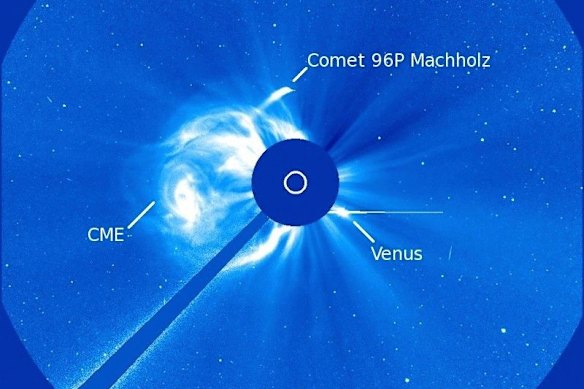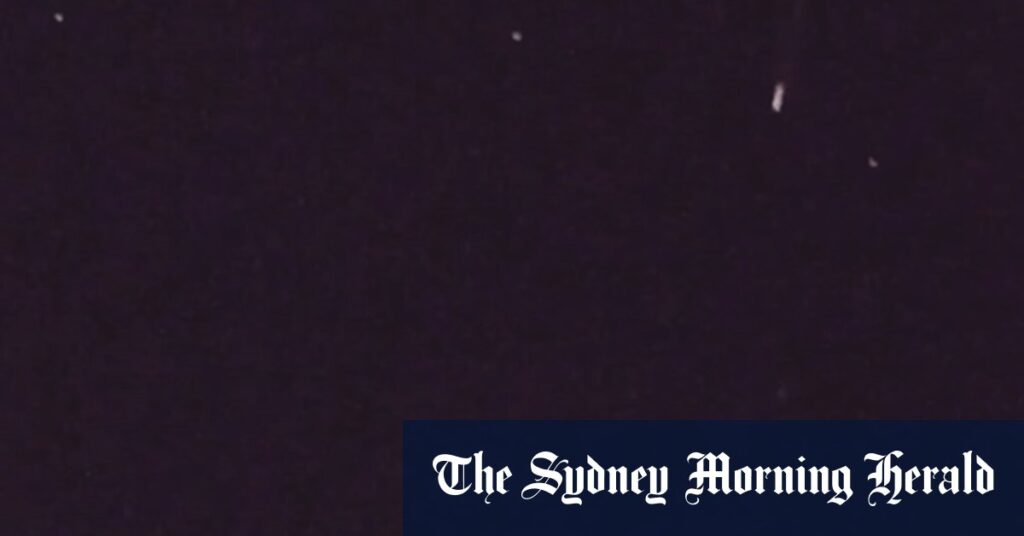Loading
The best time to view the showers will be between midnight and 4am on the nights between Monday and Wednesday (July 28-30) when both cosmic events are at their most brilliant.
Stargazers keen to catch a glimpse of the action should find a viewing spot away from light pollution such as buildings, streetlights and car headlights and allow half an hour for their eyes to adjust to the darkness.
That includes not looking at phone screens so the fast flashes of light in the sky are easier to spot.
The showers are named after the constellations from which they appear to originate: Aquarius and Capricornus.
Kamath recommends downloading a night sky mapping app to locate the constellations.
“If you look somewhere around the north-east direction, that’s where you see the constellations rising,” she said.
The location of the Southern Delta Aquariids radiant at about 9pm on Monday night. It will shift to the north as midnight approaches.Credit: Stellarium
The free version of Stellarium, the app Kamath uses, also allows users to search for the “radiant” of each meteor shower, which is the point in the sky they appear to burst from.
Sit back, rug up and cross your fingers for clear skies. Earlier in the week might prove better for meteor-spotting in Sydney with rain on the way on Tuesday and Wednesday.
Where do they come from?
Meteor showers occur when the Earth hurtles through a trail of debris left behind by a comet.
“You can think of a comet as a frozen leftover from when the solar system was made, and as this comet is going through space, they begin to shed material, dusty debris, which we call meteoroids,” Kamath said.

This NASA image shows comet 96P Machholz, which orbits the Sun about every six years and is suspected to cause the Southern Delta Aquariids meteor showers.Credit: AP
When the meteoroids enter Earth’s atmosphere, they hit air resistance at 40 kilometres per second, which makes them burn up and become “shooting stars” or meteors.
The Delta Aquariids are produced by debris which came from comet 96P/Machholz and the Alpha Capricornids from comet 169P/NEAT.
The Alpha Capricornids will become our brightest meteor shower in 200-300 years’ time, when the Earth’s orbit moves closer to the centre of the comet’s debris stream, according to a 2010 paper by two leading meteor scientists.
The Examine newsletter explains and analyses science with a rigorous focus on the evidence. Sign up to get it each week.
Read the full article here


